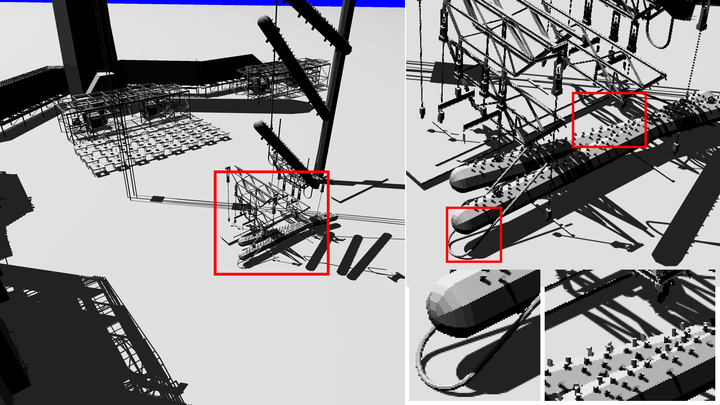
Abstract
We further describe and analyze a real-time system for rendering antialiased hard shadows using irregular z-buffers (IZBs) that we first presented in Wyman et al.. We focus on identifying bottlenecks, exploring these from an algorithmic complexity standpoint, and presenting techniques to improve performance. Our system remains interactive on a variety of game assets and CAD models while running at resolutions 1920x1080 and above and imposes no constraints on light, camera or geometry, allowing fully dynamic scenes without precomputation. We render sub-pixel accurate, 32 sample per pixel hard shadows at roughly twice the cost of a single sample per pixel. This allows us to smoothly animate even subpixel shadows from grass or wires without introducing spatial or temporal aliasing.
Prior algorithms for irregular z-buffer shadows rely heavily on the GPU’s compute pipeline. Instead we leverage the standard rasterization-based graphics pipeline, including hardware conservative raster and early-z culling. Our key observation is noting a duality between irregular z-buffer performance and shadow map quality; irregular z-buffering is most costly exactly where shadow maps exhibit the worst aliasing. This allows us to use common shadow map algorithms, which typically improve aliasing, to instead reduce our cost. Compared to state of the art ray tracers, we spawn similar numbers of triangle intersections per pixel yet completely rebuild our data structure in under 1 ms per frame.